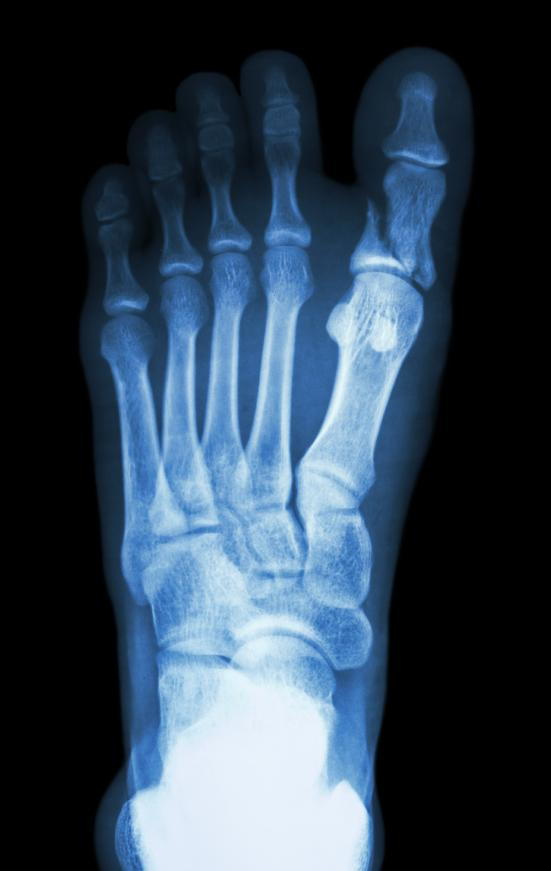Bone Spurs: Causes and Treatment
posted: Dec. 22, 2014.
 You may think of a bone spur as something sharp, but in this instance the spur refers to a growth that forms on normal bone. In most cases, the bone is smooth, but it can be painful if it presses or rubs on other bones or soft tissues such as tendons, ligaments or nerves. Along with the feet, bone spurs can develop in the knees, hips, spine, shoulders and hands.
You may think of a bone spur as something sharp, but in this instance the spur refers to a growth that forms on normal bone. In most cases, the bone is smooth, but it can be painful if it presses or rubs on other bones or soft tissues such as tendons, ligaments or nerves. Along with the feet, bone spurs can develop in the knees, hips, spine, shoulders and hands.
Causes of Bone Spurs
Bone spurs develop when the body tries to heal itself by building extra bone. The spur will form in response to rubbing, pressure or stress that continues over a long time.
• Aging Process
Some bone spurs can be linked to the breakdown of cartilage that is part of the aging process. This tissue that covers the ends of bones at our joints does tend to break down over time and wear away, in a condition called osteoarthritis. Over time, it leads to pain and swelling in the joint. These types of bone spurs are quite common in the joints of the feet.
• Poorly Fitting Shoes
Pressure at the back of the heel from wearing shoes that are too tight can lead to a bone spur on the back of the heel. Women are especially susceptible to this type of issue, which is sometimes referred to as a “pump bump.”
• Being Overweight
Carrying around extra pounds puts more stress on the feet, and puts you at risk for developing bone spurs over time. Losing some weight will reduce the stress on your feet and lower your risk of developing this condition.
• Plantar Fasciitis
Plantar fasciitis is a condition that occurs when the long ligament on the bottom of the foot becomes tight or stressed and pulls on the heel. When the pulling occurs, it causes the ligament to become inflamed. As the bone tries to heal itself, a bone spur may form on the bottom of the heel.
Treatment for Bone Spurs
A visit to a podiatrist will confirm that the pain you are experiencing is from a bone spur. Once you have been diagnosed, your podiatrist will discuss your treatment plan. It could include an over the counter pain reliever, such as ibuprofen (Advil or Motrin) or naproxen (Aleve or other brands). If the bone spur is limiting your range of motion or pressing on nerves in your foot, you may require more aggressive treatment.
Foot pain is not normal, and Sheldon H. Nadal D.P.M can diagnose and treat the cause of your pain, including foot spurs. Contact him today to arrange an appointment.